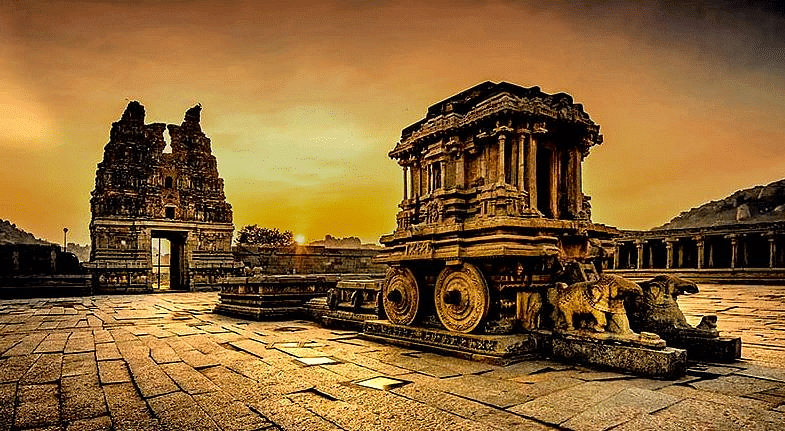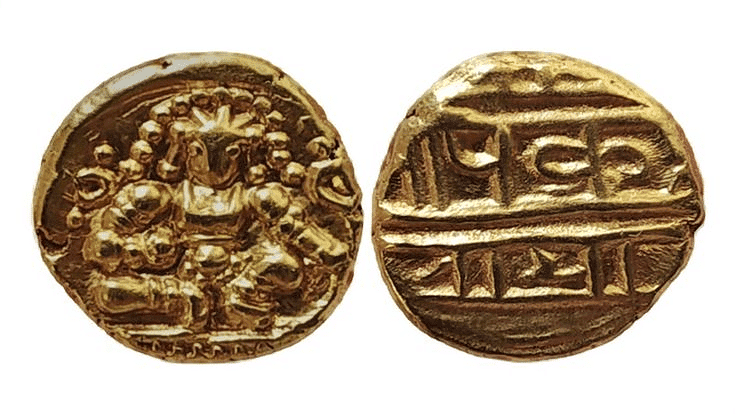UPSC Exam > UPSC Notes > History for UPSC CSE > Social & Economic Condition: The Vijayanagar Empire
Social & Economic Condition: The Vijayanagar Empire | History for UPSC CSE PDF Download
Social and Economic Condition
Social Condition
- The rulers of Vijayanagar were the followers of Vishnu but they followed a policy of religious toleration towards all.
- A study of the relevant material shows that women occupied a high position in society. They took part in the political, social and literary life of the country.
- According to Nuniz. “He (king) has also women who wrestle and others who are astrologers and soothsayers ; and he has women who write all the accounts of expenses that are incurred inside the gates, and others whose duty to write all the affairs of the kingdom and compare their books with those of writers outside; he was women also for music who played instruments and sing. Even the wives of the king are well-versed in music. It is said that he has judges, as well as bailiffs and watchmen, who every night guard the palace and these are women.”
- Men were allowed to marry more than one wife. This was particularly so among the rich.
- Child marriage was common. Big dowries were demanded at the time of marriage.
- The practice of sati was common and was sanctioned by the Brahmans.
- Abdur Razzak refers to the existence of brothels in the city where women of loose character lived.
Brahmans
- The Brahmans were held in high esteem by the rulers of Vijayanagar and no wonder they had a lot of influence in the social, religious and political fields.
- Nuniz describes the Brahmans as “honest men", given to merchandise, very acute and of much talent, very good at accounts, lean men and well formed, but little fit for hard work.”
 Vijaynagar Empire
Vijaynagar Empire
Food
- There were no restrictions in matters of food. People took fruits, vegetables, oil and meat of all kinds except that of oxen or cows.
- According to Nuniz, “These kings of Bisnaga eat all sorts of things, but not the flesh of oxen or cows which they never kill in all the county of the heathen, because they worship them. They eat mutton, pork, venison, partridges, hares, doves, quails, and all kinds of birds; even sparrows, and rats, and cats, and lizards, all of which are sold in the market of the city of Bisnaga”.
- Bloddy sacrifices were performed in the Vijayanagar empire.
- According to Paes, on a certain festival, the king used to witness the slaughter of 24 buffaloes and 150 sheep.
- When the Mahanavami festival was over, 250 buffaloes and 4,500 sheep were killed on the last day.
Question for Social & Economic Condition: The Vijayanagar EmpireTry yourself: What was the social status of women in the Vijayanagar empire?View Solution
Economic Condition
- The empire of Vijayanagar was very rich. The foreign travellers who visited the Vijayanagar empire have paid tributes to its wealth and splendour.
- According to Nicolo Conti, “The circumference of the city (Vijayanagar) is 60 miles ; its walls are carried up to the mountains and enclosed the valley at their foot, so that its extent is thereby increased. In the city there are estimated to be 99,000 men fit to bear arms. The king is more powerful than all the other kings of India.”
- The prosperity of the Vijayanagar empire was due to the growth of agriculture, industries, trade and commerce. The state followed a wise irrigation policy. Industries were also encouraged by the state.
- Commerce was inland, coastal and overseas. Calicut was the most important port on the Malabar coast. If Abdur Razzais to be believed, there were as many as 300 sea-ports in the Vijayanagar empire.
- There were commercial relations with the islands in the Indian Ocean, the Malaya Archipelago, Burma, China, Arabia, Persia, South Africa, Abyssinia and Portugal. The exports from the Vijayanagar empire were cloth, rice, iron, salt petre, sugar and spices.
- The imports were horses, elephants, pearls, copper, coral, mercury, China silk and velvet. Edoardo Barbosa tells us that South India got its ships built in the Maldive Islands. The art of ship-buildings was well-known.
- The coins of the empire were those of gold, copper and silver. There were emblems of different gods and animals on them.
- They have three kinds of money made of gold mixed with alloy.
Varahas - weight about one mithkal, equivalent to two dinars.
Kopeki - which is called pertab, is the half of the first.
Fanam - is equivalent in value to one-tenth part of the last mentioned coin. - Of the different coins the fanam is the most useful.
- They cast in pure silver a coin which is the sixth of the fanam, which they call tar.
- A copper coin with the third of a tar is called dijital.
- If any man receives from the Diwan an allowance in gold, he has to be paid by the darabkhana.
 Gold Coins
Gold Coins
The document Social & Economic Condition: The Vijayanagar Empire | History for UPSC CSE is a part of the UPSC Course History for UPSC CSE.
All you need of UPSC at this link: UPSC
|
122 videos|653 docs|168 tests
|
FAQs on Social & Economic Condition: The Vijayanagar Empire - History for UPSC CSE
| 1. What was the social condition of the Vijayanagar Empire? |  |
Ans. The Vijayanagar Empire had a diverse social structure with four major castes - Brahmins, Kshatriyas, Vaishyas, and Shudras. The caste system was strictly followed and the lower castes faced discrimination. Women had limited rights and were expected to follow the patriarchal norms of the society. The empire also had a slave system where prisoners of war and debtors were enslaved.
| 2. What was the economic condition of the Vijayanagar Empire? |  |
Ans. The Vijayanagar Empire had a thriving economy based on agriculture, trade, and industry. The empire had a well-developed irrigation system that facilitated agriculture. The empire also had a monopoly on the trade of spices, textiles, and precious stones. The city of Vijayanagar was a center for handicrafts and metalwork. The empire had a sophisticated system of taxation that helped in revenue collection.
| 3. What was the impact of the Vijayanagar Empire on art and architecture? |  |
Ans. The Vijayanagar Empire was known for its contribution to art and architecture. The empire patronized the construction of temples, palaces, and other public buildings. The temples had intricate carvings and sculptures that depicted Hindu mythology. The architecture of the empire was a blend of Dravidian and Islamic styles. The empire also had a tradition of literature, music, and dance, with prominent works like the Kannada epic, "Karnataka Kadambari."
| 4. What was the role of women in the Vijayanagar Empire? |  |
Ans. Women in the Vijayanagar Empire had limited rights and were expected to follow the patriarchal norms of the society. They were primarily responsible for household chores and raising children. However, some women were involved in the administration and management of the empire. The queen had a significant role in the administration and was responsible for the welfare of the women in the empire.
| 5. What led to the decline of the Vijayanagar Empire? |  |
Ans. The decline of the Vijayanagar Empire was caused by a combination of factors. The empire faced constant attacks from the Bahmani Sultanate, which weakened its military power. The empire also faced internal conflicts, with the nobles vying for power. The empire's economy was weakened due to the loss of its monopoly on trade. Finally, the empire was weakened by a severe famine in the late 16th century, which led to widespread starvation and disease.
Related Searches






















